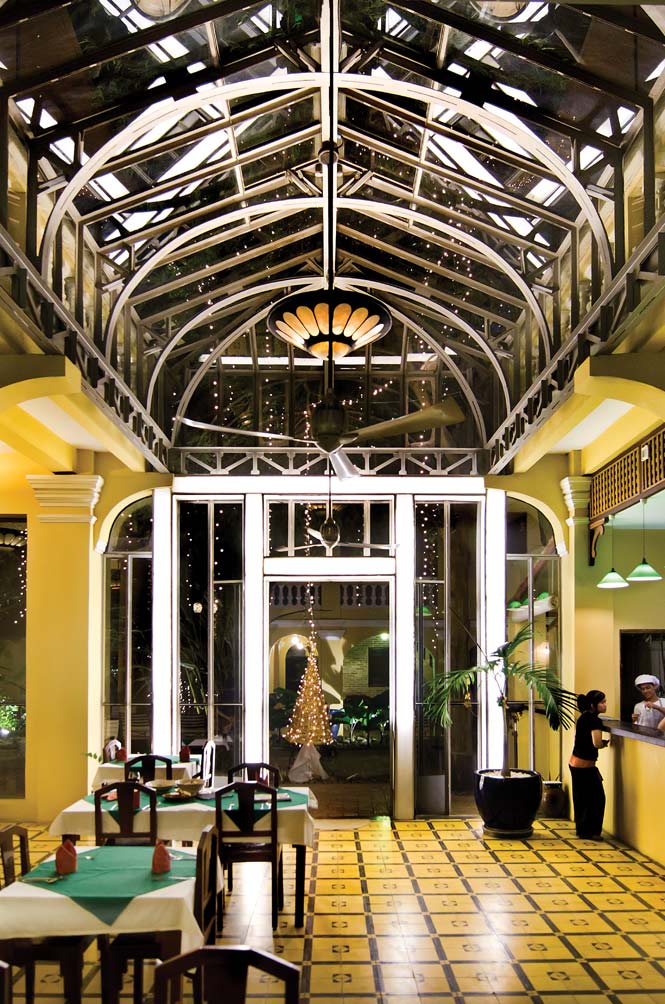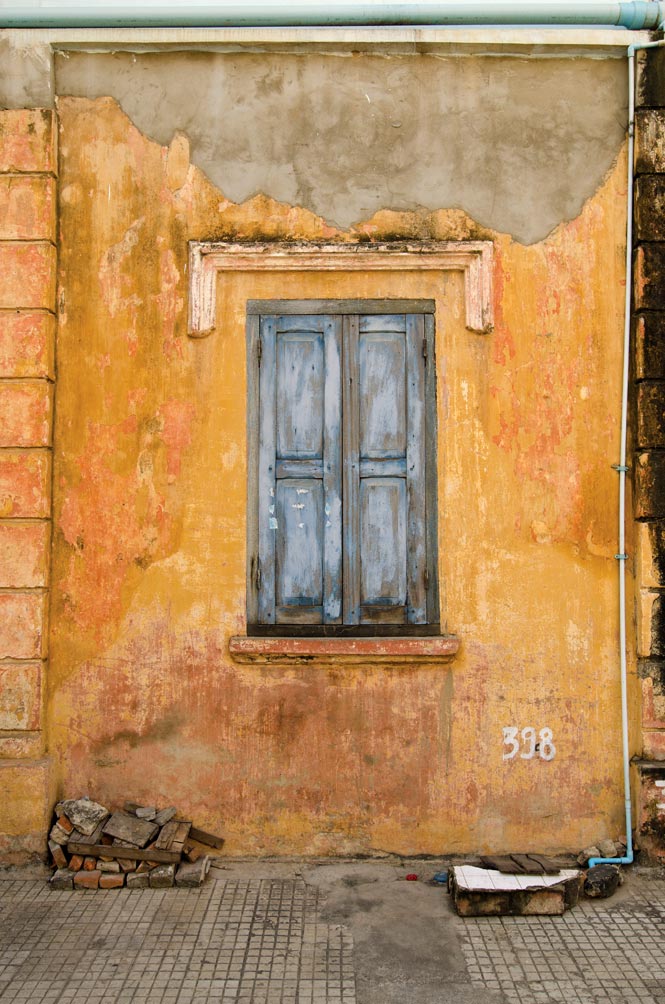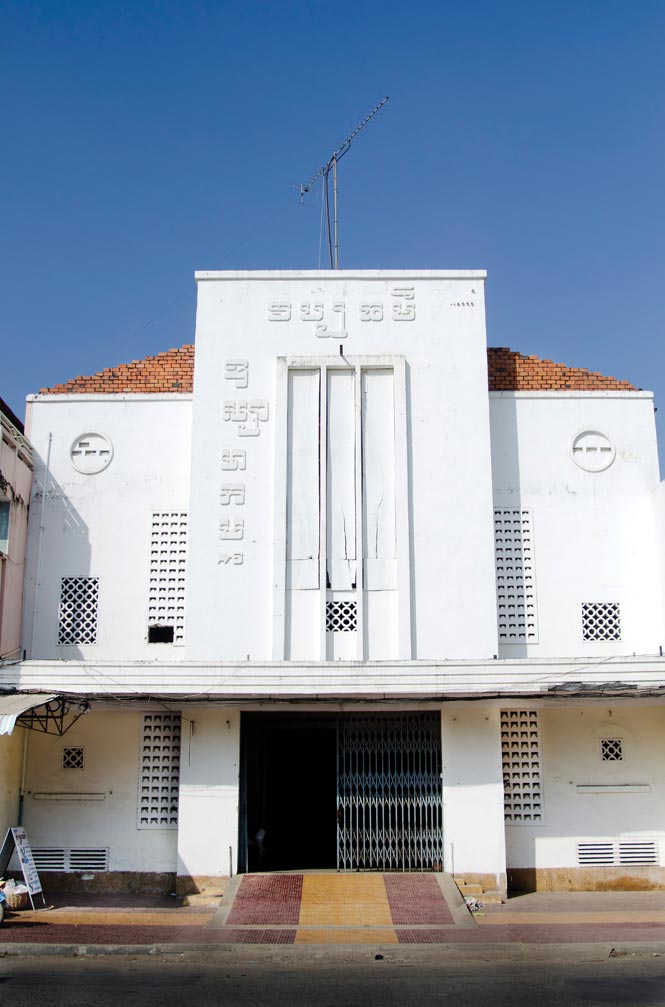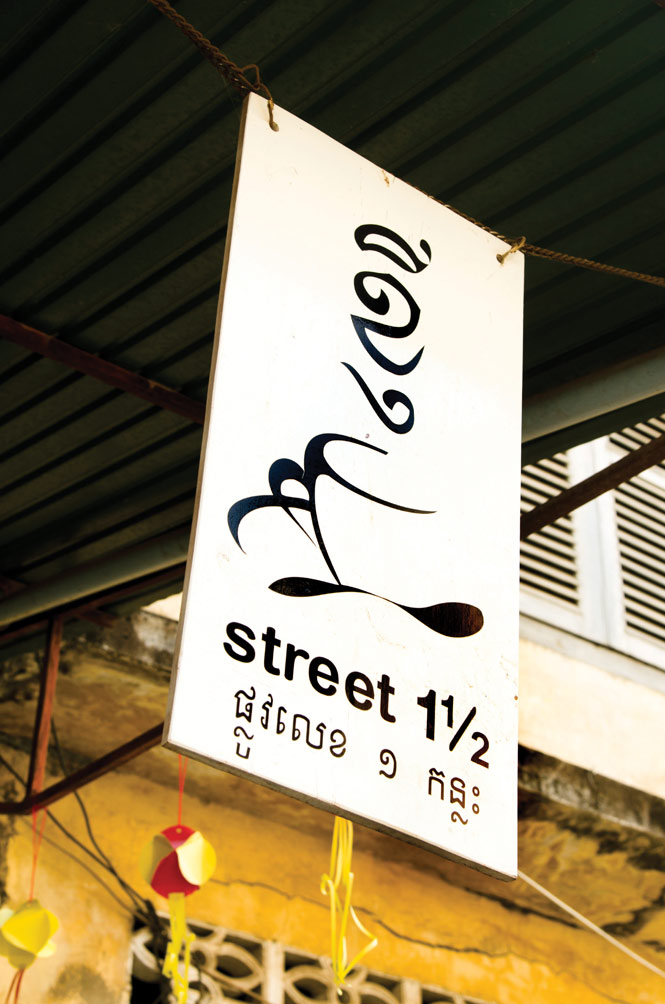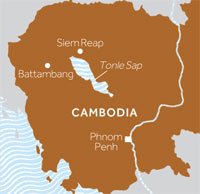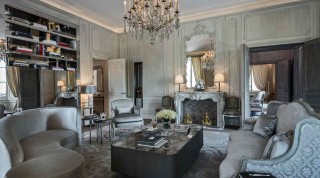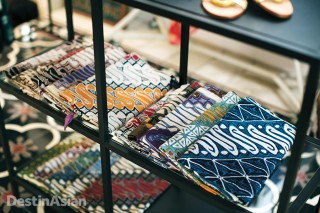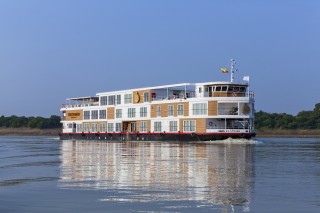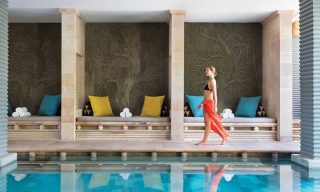Home to 140,000 people, Battambang has been an agricultural center for at least a millennium. The Angkor kings erected temples across the countryside, the finest of which is Prasat Phnom Banan, a 12th-century sanctuary that commands a hilltop 20 kilometers south of town. The area fell under Siamese rule from 1795 until 1907, during which time it was governed by six generations of the same family. Their legacy can be found in the Thai-Buddhist architecture of Wat Damrei Sor, built in 1904, and especially in the Sala Khaet mansion, begun a year later by the last hereditary Lord Governor of Battambang, Chhum Aphaiwong. Lord Chhum hired an Italian architect to design a grand European-style residence along the west bank of the Sangker, complete with an ornate pediment, five-meter ceilings, mosaic floor tiles, and sweeping staircases.
Sak shows me around the building, which has undergone an ambitious restoration, making special note of the staircase just inside the main entrance. Unbeknownst to visitors, these steps passed directly below the bathroom containing his lordship’s toilet.
“This staircase was only for guests,” Sak explains. “If someone wanted to meet the Lord Governor they had to go this way, under the toilet, to remove any magic power they might have before meeting him.”
But Lord Chhum never got a chance to test his toilet mojo. Before the Sala Khaet was completed, the Franco-Siamese Treaty of 1907 ceded the Thai-occupied western provinces, including Battambang and Siem Reap, back to Cambodia. Chhum resettled across the border in Prachinburi, where he hired the same architect and many of the same craftsmen to construct another palatial home. Today serving as a museum of traditional Thai medicine, it’s almost an exact copy of the Sala Khaet.
With the departure of the Thais, French colonial administrators soon drafted the first urban development plan for Battambang. They laid out an orderly grid of streets, with the main thoroughfares—Streets No. 1 to 3—running parallel to the Sangker. And they instituted building codes, ensuring a legacy of classic shophouse features such as high ceilings, louvered window shutters, air wells, and shaded arcades (the pedestrian-friendly “five-foot ways”), all designed to mitigate the constant heat. “They were built to perfectly suit the tropical atmosphere,” Sak says.


